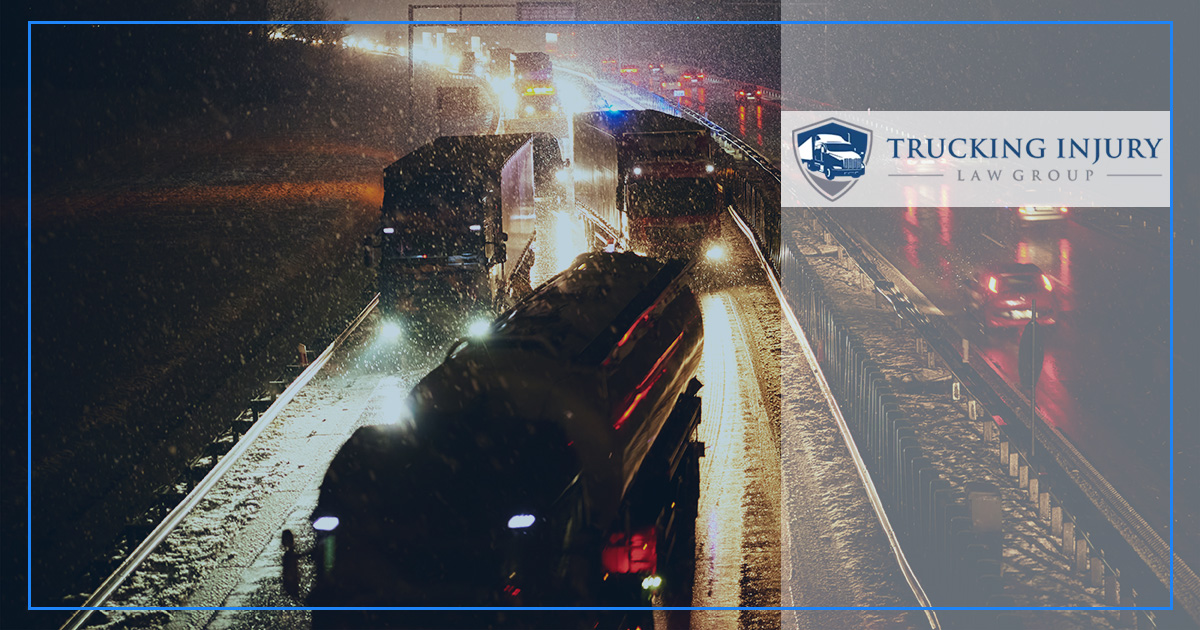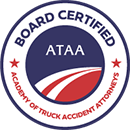What Is the Peak Time of Day for Truckers to Be on the Road?

At the Trucking Injury Law Group, we always make sure everyone stays safe on the road. We will explore the peak times for truckers, the factors that contribute to these patterns, and how these times impact safety and productivity on the road.
Morning Hours: 5 AM to 10 AM
You might notice plenty of truck traffic if you are ever on the road in the early morning hours. These are the busiest times for truckers. During these hours, most commuter traffic has not peaked. As a result, trucks can travel longer distances without the stop-and-go traffic experienced later in the day. For truckers driving on highways or interstates, they prefer to operate their trucks when there are fewer vehicles on the road.
Also, the scheduled delivery times play a role as well. Delivery trucks need to deliver their goods to distribution centers, stores, or factories first thing in the morning. Since these locations often open their doors between 6 AM and 8 AM, drivers will want to be on the road early to arrive on time.
Even federal regulations are part of these decisions. The Federal Motor Carrier Safety Administration‘s Hours of Service (HOS) regulations limit the number of hours truckers can drive per day. They are allowed to drive up to 11 hours in a 14-hour workday after a 10-hour rest period. For that reason, many drivers prefer to start early in the morning to make the most of their allowable hours before taking rest breaks.
Midday Hours: 10 AM to 3 PM
Another busy time is between 10 AM and 3 PM. While the roads can get busier with other traffic, this is still a peak driving time for long-haul truckers. After the morning rush hour clears, the roads are usually less congested. As a result, truckers can maintain steady driving speeds on highways. Many of these drivers travel long distances, so they want to cover as much ground as possible before reaching their required rest breaks.
In most cases, the FMCSA-regulated 30-minute break must occur after eight hours of driving. Usually, that happens around midday, when truckers stop for lunch or refuel at a rest area. After their break, they continue driving to reach the next major checkpoint or delivery destination before evening.
Driving during these hours gives truckers better visibility. These drivers can easily spot road hazards, read signage, notice potential blind spots, and navigate unfamiliar routes. For safety reasons, these truckers prefer driving while there is still light. With that, late morning and early afternoon are optimal times to be on the road.
Overnight Hours: 7 PM to 5 AM
While fewer truckers are on the road at night, this time frame can still be busy for those who prefer overnight hauls. Truckers who work overnight shifts enjoy a few advantages. In these cases, roads are less crowded after 7 PM. With that, it is easier for truckers to cover longer distances uninterrupted. This can help drivers navigating through major urban areas.
Along with that, overnight hauls are better for long-haul truckers who need to maximize their hours on the road. At night, truckers can avoid much of the congestion, allowing them to make faster progress toward their destinations.
But there are still some risks. Truckers need to stay alert and take frequent breaks to avoid accidents caused by drowsy driving.
Why Truckers Avoid Evening Hours: 3 PM to 7 PM
During these times, many people are on the road, and it causes some problems for truckers. Truckers can encounter heavy commuter traffic throughout this time frame, especially in urban areas. Many times, the roads leading in and out of cities are often clogged as people head home from work. In turn, it can be challenging for truckers to maintain consistent speeds or stay on schedule.
Also, there is pressure to complete deliveries. Many trucking companies require deliveries to be completed by the end of the business day, around 5 PM. With that in mind, these drivers often race against the clock to reach their destination or warehouse during this time frame.
The FMCSA Hours of Service play a role too. By the late afternoon, truckers nearing the end of their 11-hour driving limit will begin looking for rest stops or parking spots. Finding a safe, legal parking place is difficult during peak traffic hours since rest areas can quickly fill up. Truckers who have reached their maximum service hours must take a 10-hour rest break during this time.
With the combination of increased traffic volume and the pressure to meet deadlines, there is a risk of trucking accidents on Spokane’s roads. Truckers need to stay extra vigilant and may have to plan routes that avoid major urban centers during rush hour to minimize risk.
The early morning and midday hours are the preferred times for truckers to be on the road. During these times, they can cover the most distance with the least traffic, while the afternoon and evening hours can be more challenging due to rush hour and delivery pressures.
No matter the time they choose, these drivers must remain compliant with hours-of-service regulations while maximizing their efficiency and safety on the road. If they fail to do so, they could be liable for any accidents caused by their negligent behavior.





